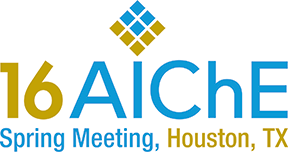

Recent updates to pressure relief system design RAGAGEP include provision for risk based overpressure protection. Although risk based approaches are not new, the recent RAGAGEP provides additional guidance and criteria. This study presents a practical risk based approach to pressure relief and effluent handling system design and a supporting case study that results in safe and cost effective design.
Historically, pressure relief system design focused on qualitatively identifying a controlling scenario or design basis, the situation that places the highest demand on the pressure relief system, and calculated that the relief system could adequately provide overpressure protection. The associated design basis documentation was inadequate and was often only a relief device specification sheet.
The promulgation of OSHA 29 CFR 1910.119, the PSM standard, has significantly improved design basis documentation. Since the implementation of the PSM standard, typical steps in relief system design and design basis evaluation and documentation include identification of overpressure scenarios; quantification of the associated relief requirements and relief system performance; and evaluation of the hydraulic performance of the effluent handling system. This approach has improved relief system design and design basis documentation, but has also significantly increased the cost without a corresponding benefit in plant safety.
Risk based pressure relief and effluent handling system design also begins with identification of overpressure scenarios. However, the foundation of the risk based approach leverages existing PHAs and risk tolerability criteria already implemented at PSM covered facilities. When PHAs use LOPA, the consequences and likelihood of the scenarios are determined. The consequence of an overpressure scenario can be further evaluated with computational techniques, which include consideration for the pressure rise, potential release of toxic and flammable fluids, and resulting vapor cloud. Next, using risk tolerability criteria the risk of the identified overpressure scenarios is compared to risk tolerability guidelines. Scenarios with an intolerable risk are then mitigated through enhancements and alternatives including traditional pressure relief systems. The risk tolerability and cost of the mitigation measures are then balanced to ensure a safe and cost effective relief system.
Integrating the pressure relief system design into existing PSM practices reduces the effort and cost of developing and maintaining relief system design basis documentation and focuses the designers’ intent on improving plant safety. This risk based approach to pressure relief system design ensures adequate overpressure protection systems and sound investment in human and capital resources focused on risk reduction.
